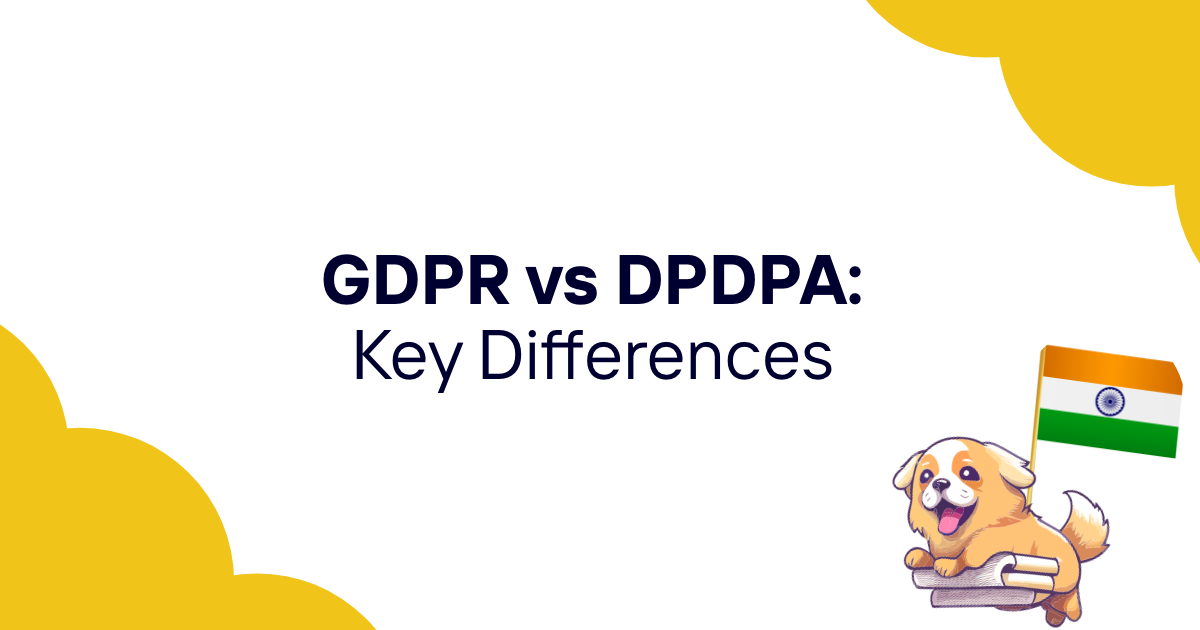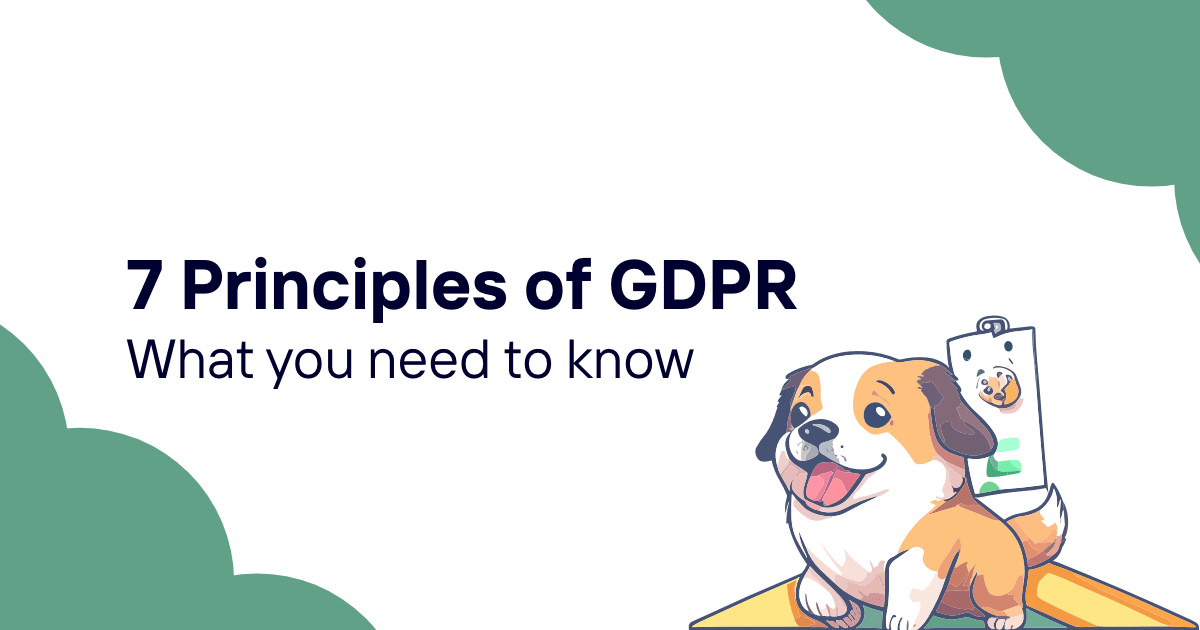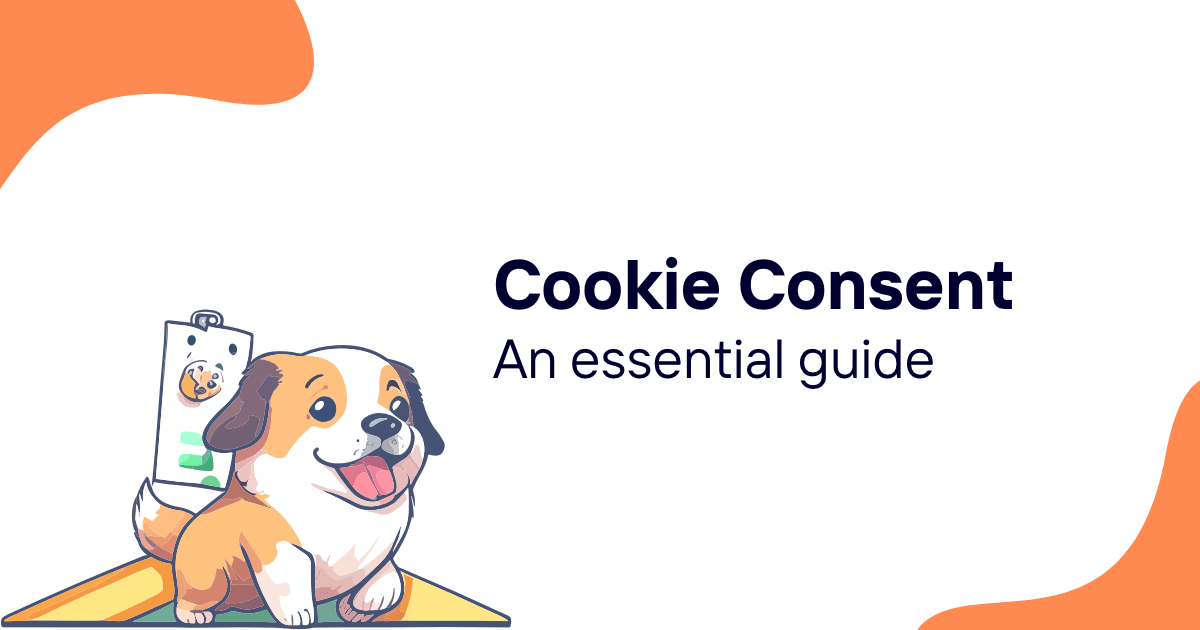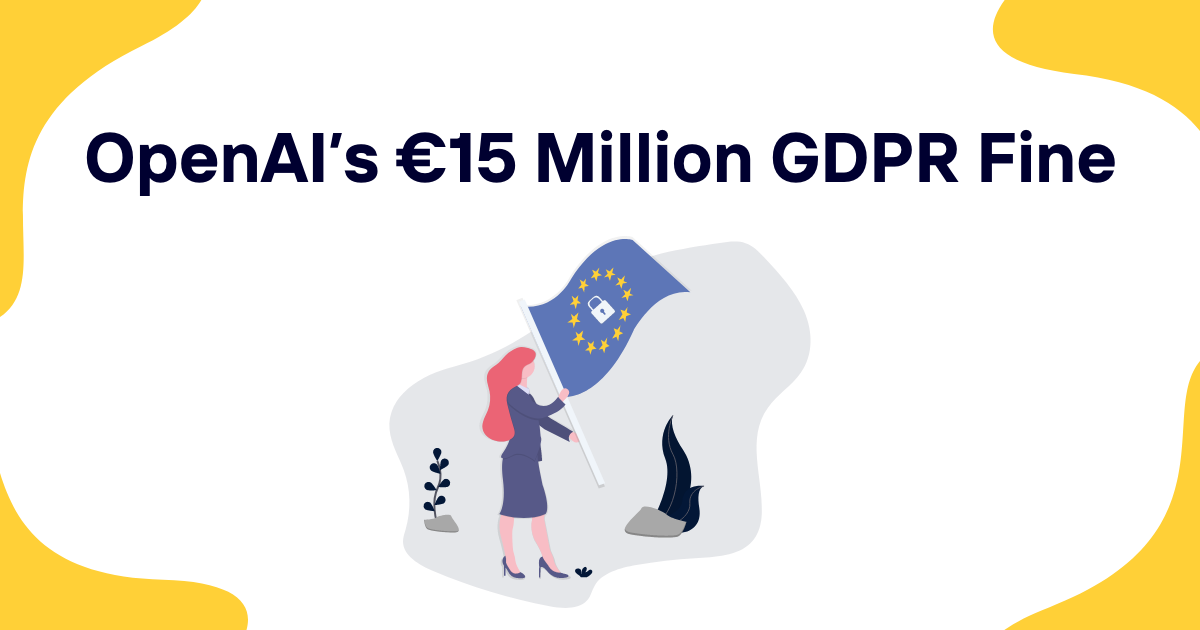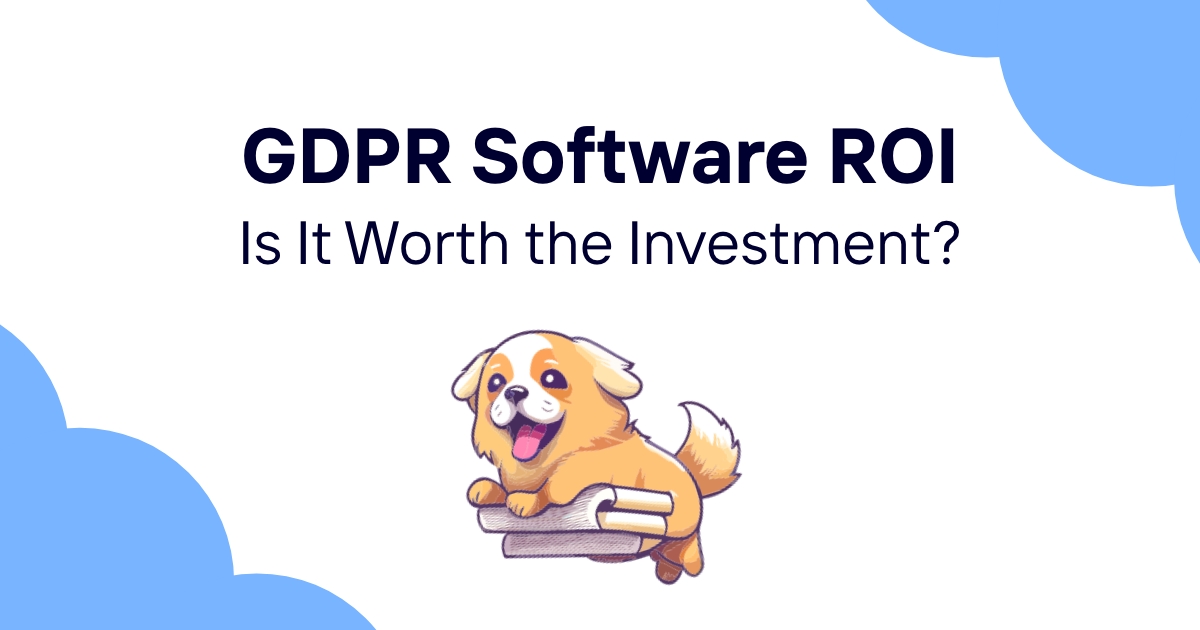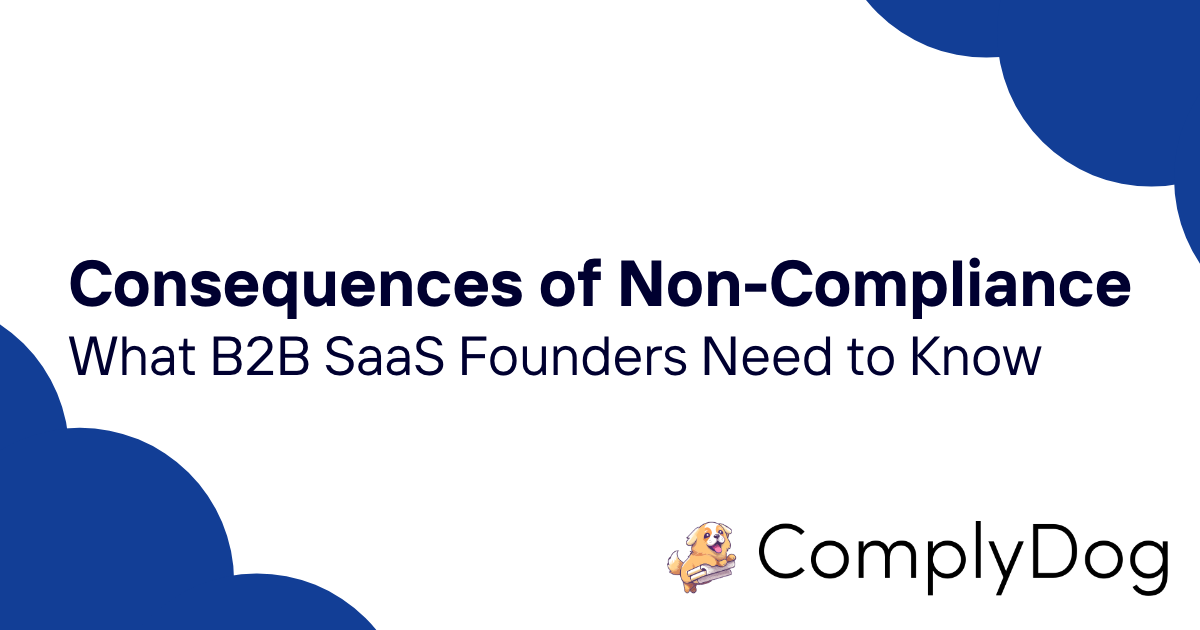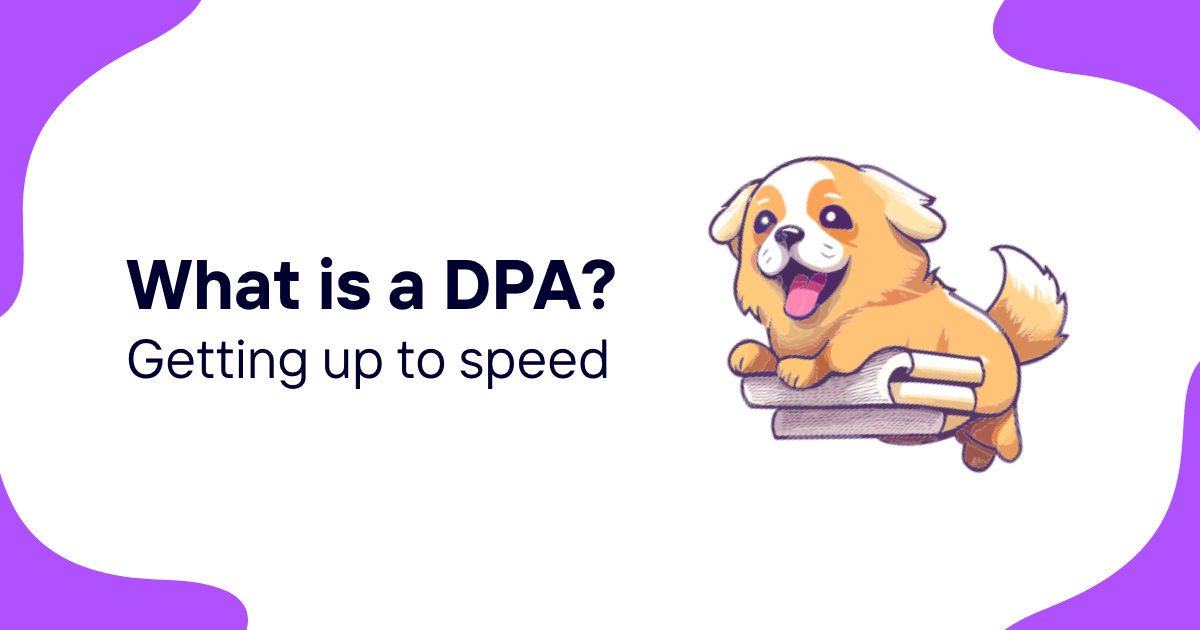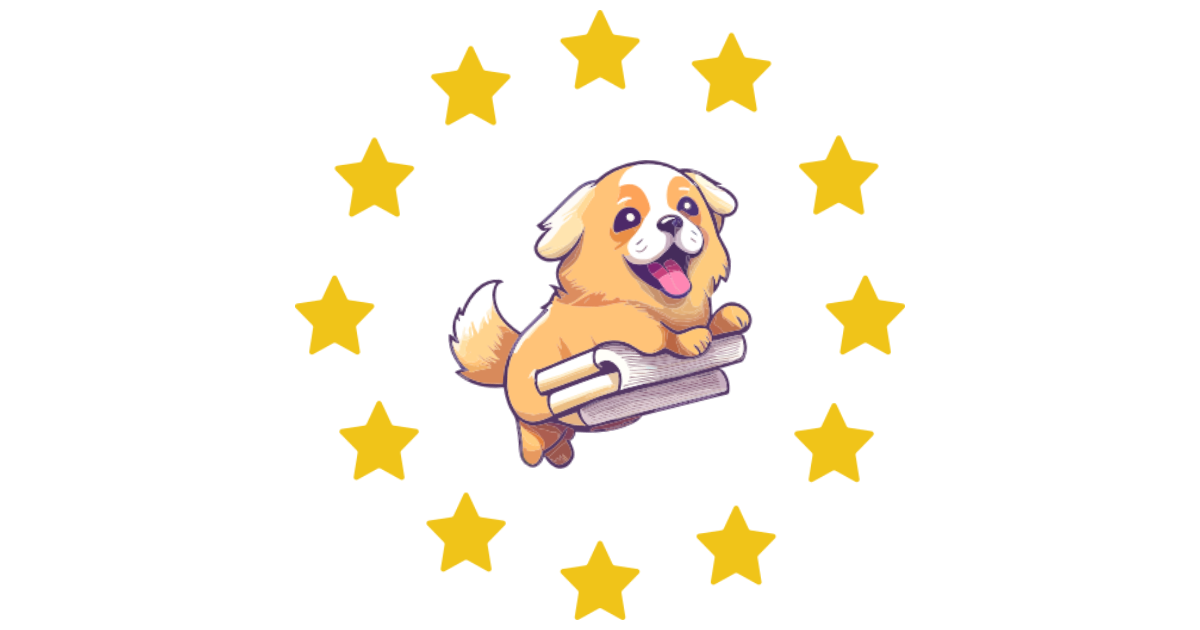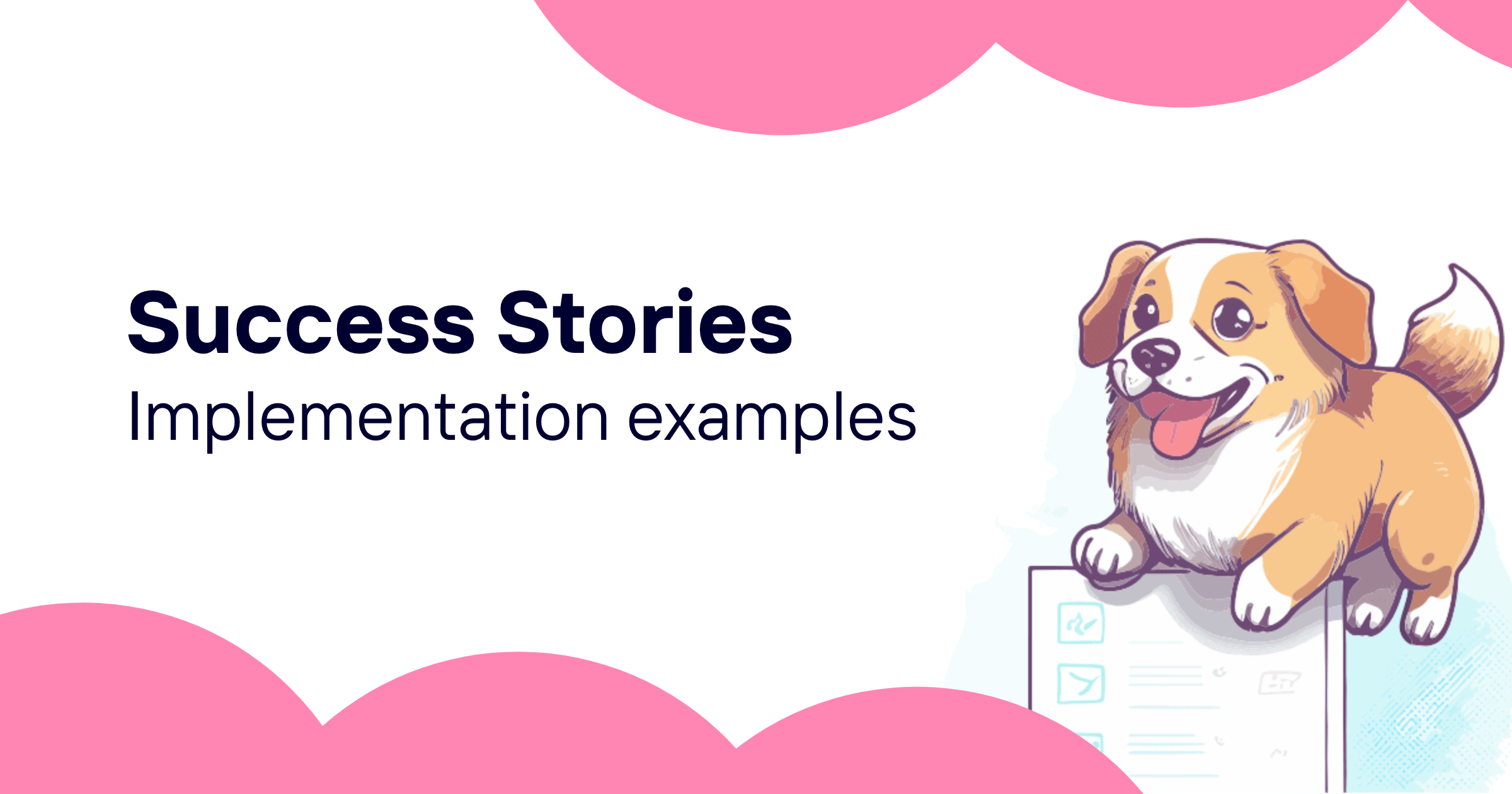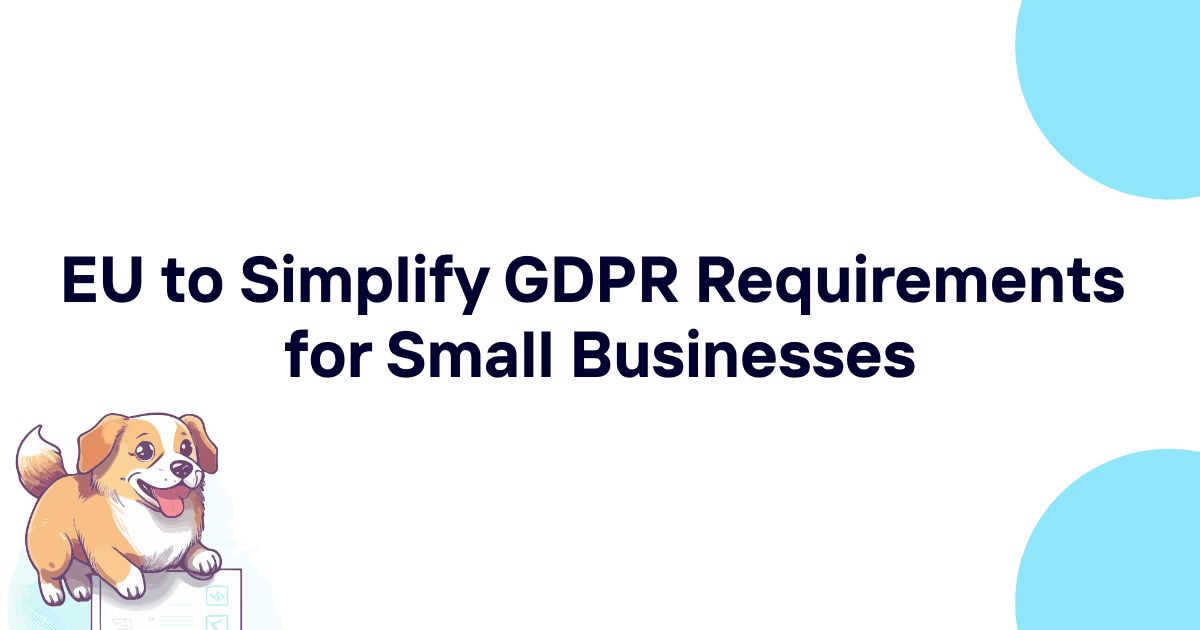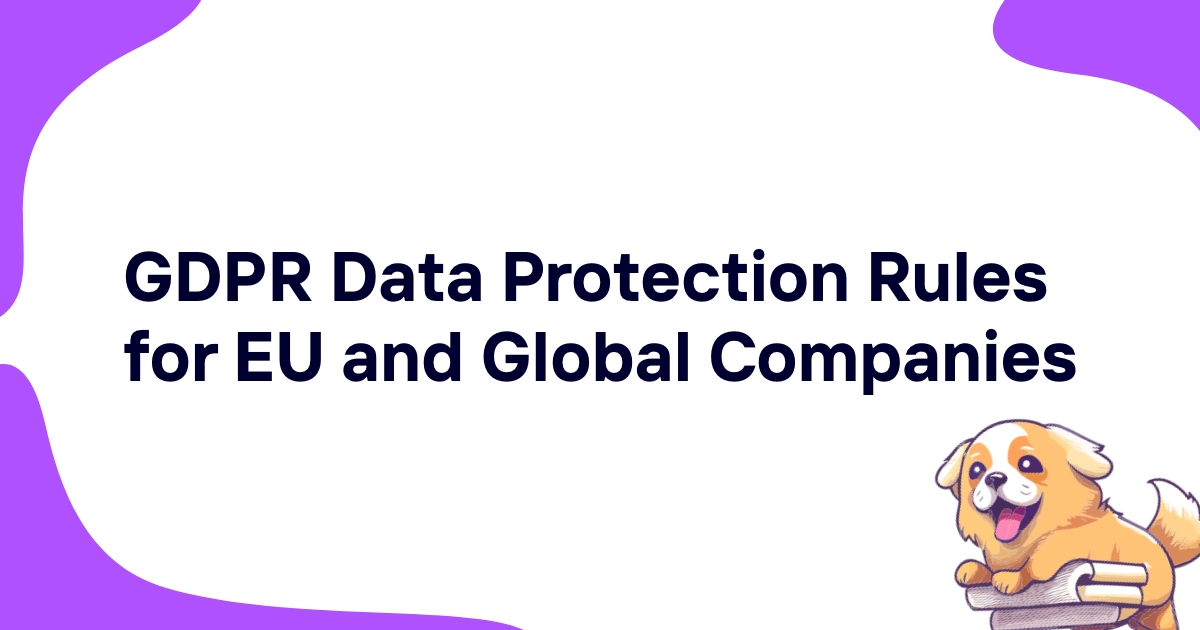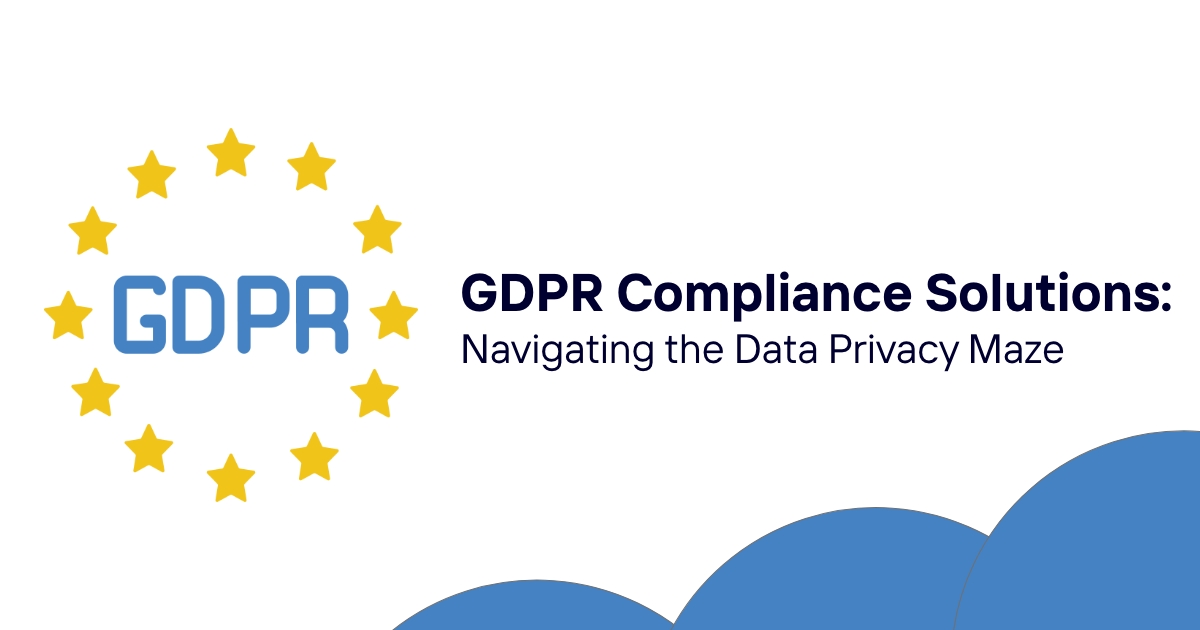The legal landscape of data protection has evolved significantly in recent years, with countries worldwide implementing comprehensive frameworks to safeguard personal information. Among these frameworks, the European Union's General Data Protection Regulation (GDPR) stands as a pioneering legislation that has influenced similar laws across the globe. India's Digital Personal Data Protection Act (DPDPA), enacted in 2023, represents the country's response to modern data protection challenges.
For businesses operating across borders, understanding the differences between these two significant regulatory frameworks is crucial for compliance and strategic planning. Let's explore how the GDPR and India's DPDPA compare and contrast in their approach to data protection.
Table of Contents
- Overview of GDPR and DPDPA
- Territorial Scope and Applicability
- Key Definitions and Terminology
- Legal Basis for Processing Data
- Data Subject Rights
- Data Protection Authorities
- Data Breach Notification Requirements
- Penalties and Enforcement
- Data Localization Requirements
- Cross-Border Data Transfers
- Consent Requirements
- Children's Data Protection
- Compliance Challenges for Organizations
- Streamlining Compliance with Technology Solutions
Overview of GDPR and DPDPA
The GDPR: Setting the Global Standard
The General Data Protection Regulation came into effect on May 25, 2018, replacing the Data Protection Directive 95/46/EC. It represents one of the most stringent data protection frameworks globally, aimed at harmonizing data privacy laws across Europe and empowering EU citizens with greater control over their personal data.
The GDPR's core principles include:
- Lawfulness, fairness, and transparency
- Purpose limitation
- Data minimization
- Accuracy
- Storage limitation
- Integrity and confidentiality
- Accountability
The regulation applies to all organizations that process personal data of EU residents, regardless of where the organization is located, making it effectively a global standard for many multinational companies.
The DPDPA: India's Data Protection Journey
After years of deliberation and multiple drafts, India enacted the Digital Personal Data Protection Act in August 2023. The DPDPA marks a significant milestone in India's approach to data protection, replacing the outdated Information Technology Act provisions that previously governed data protection.
The DPDPA introduces several key principles:
- Lawful processing of personal data
- Purpose limitation
- Data minimization
- Accuracy of personal data
- Reasonable security safeguards
- Personal data breach notification
- Accountability
While influenced by the GDPR, the DPDPA takes a somewhat different approach, reflecting India's unique economic, social, and technological context.
Territorial Scope and Applicability
GDPR's Extraterritorial Reach
The GDPR has a remarkably broad territorial scope, applying to:
- Organizations established in the EU, regardless of whether the data processing takes place in the EU
- Organizations not established in the EU but offering goods or services to EU residents
- Organizations that monitor the behavior of EU residents
This extraterritorial application means that companies worldwide must comply with the GDPR if they interact with EU residents' data, creating a de facto global standard for many international businesses.
DPDPA's Territorial Application
The DPDPA applies to:
- Processing of digital personal data within India
- Processing of digital personal data outside India if it relates to offering goods or services to individuals in India
- Profiling of individuals within the territory of India
The DPDPA focuses specifically on digital personal data, unlike the GDPR which covers both digital and non-digital personal data. This narrower scope reflects India's focus on regulating the digital economy while possibly leaving non-digital data processing for separate regulations.
Key Definitions and Terminology
Understanding the terminological differences between the two laws is essential for accurate compliance.
GDPR Terminology
- Data Controller: The entity that determines the purposes and means of processing personal data
- Data Processor: An entity that processes personal data on behalf of the controller
- Data Subject: An identified or identifiable natural person
- Personal Data: Any information relating to an identified or identifiable natural person
- Special Categories of Personal Data: Sensitive data including racial or ethnic origin, political opinions, religious beliefs, etc.
DPDPA Terminology
- Data Fiduciary: Equivalent to the GDPR's data controller
- Data Processor: Similar to the GDPR definition
- Data Principal: Equivalent to the GDPR's data subject
- Personal Data: Digital personal data relating to an identified or identifiable individual
- Sensitive Personal Data: The DPDPA doesn't explicitly define categories of sensitive data in the Act itself but delegates this to separate rules
This shift in terminology from "controller" to "fiduciary" in the DPDPA is significant as it emphasizes the trust-based relationship and the duties of care associated with handling personal data.
Legal Basis for Processing Data
GDPR's Six Legal Bases
The GDPR specifies six legal bases for processing personal data:
- Consent
- Contractual necessity
- Legal obligation
- Vital interests
- Public interest
- Legitimate interests
Organizations must identify and document the specific legal basis for each processing activity, with consent being just one of several options.
DPDPA's Approach
The DPDPA takes a somewhat simpler approach, focusing primarily on:
- Consent as the primary basis for processing
- Certain legitimate uses without consent (such as state functions, compliance with court orders, employment purposes)
This marks a significant difference between the two frameworks, with the DPDPA placing greater emphasis on consent while providing fewer alternative legal bases compared to the GDPR.
Data Subject Rights
Both regulations aim to empower individuals with control over their personal data, but they differ in the specific rights granted.
GDPR Data Subject Rights
The GDPR provides EU residents with extensive rights:
- Right to be informed
- Right of access
- Right to rectification
- Right to erasure (right to be forgotten)
- Right to restrict processing
- Right to data portability
- Right to object
- Rights related to automated decision making and profiling
DPDPA Data Principal Rights
The DPDPA grants the following rights to data principals:
- Right to information about data processing
- Right to access personal data
- Right to correction and erasure
- Right to grievance redressal
- Right to nominate another person in case of death or incapacity
A notable difference is the absence of an explicit right to data portability in the DPDPA, which is a significant right under the GDPR allowing individuals to receive their data in a structured, commonly used format.
Data Protection Authorities
EU Data Protection Authorities
The GDPR established a system of supervisory authorities in each EU member state, with the European Data Protection Board (EDPB) coordinating their activities. This creates a decentralized enforcement mechanism with harmonization at the EU level.
The GDPR's "one-stop-shop" mechanism allows multinational companies to primarily deal with a single supervisory authority in their main establishment country.
India's Data Protection Board
The DPDPA establishes a Data Protection Board of India, which functions as the central authority for enforcing the law. Unlike the EU's decentralized approach, India opts for a single enforcement body appointed by the central government.
The Board's independence has been a point of debate, as the DPDPA allows for significant government influence in its composition and functioning, unlike the requirement for independent supervisory authorities under the GDPR.
Data Breach Notification Requirements
GDPR's Breach Notification Regime
Under the GDPR, organizations must:
- Report data breaches to the supervisory authority within 72 hours of becoming aware of the breach (if the breach is likely to result in a risk to individuals' rights and freedoms)
- Notify affected individuals without undue delay (if the breach is likely to result in a high risk to their rights and freedoms)
- Document all breaches, including those not reported
DPDPA's Breach Notification Approach
The DPDPA requires data fiduciaries to notify:
- The Data Protection Board about personal data breaches
- The affected data principals if directed by the Board
The DPDPA doesn't specify a strict timeline like the GDPR's 72-hour requirement, instead stating notifications should be made "as soon as possible" after becoming aware of the breach. The specific requirements for breach notification are expected to be detailed in subsequent rules.
Penalties and Enforcement
Both regulations enforce compliance through significant penalties, but with different structures and amounts.
GDPR Penalties
The GDPR implements a two-tiered penalty system:
- Up to €10 million or 2% of global annual revenue, whichever is higher, for less severe violations
- Up to €20 million or 4% of global annual revenue, whichever is higher, for more severe violations
These substantial penalties have led to significant fines against major tech companies, with some reaching hundreds of millions of euros.
DPDPA Penalties
The DPDPA takes a different approach with specific monetary penalties:
- Up to ₹250 crore (approximately $30 million) for certain violations
- Up to ₹200 crore (approximately $24 million) for failure to protect personal data
- Up to ₹150 crore (approximately $18 million) for other violations
The DPDPA also introduces penalties for data principals who file frivolous complaints, which is not present in the GDPR.
This table compares the maximum penalties under both regulations:
| Violation Type | GDPR Maximum Penalty | DPDPA Maximum Penalty |
|---|---|---|
| Most severe violations | €20 million or 4% of global annual revenue | ₹250 crore (approx. $30 million) |
| Security failures | €10 million or 2% of global annual revenue | ₹200 crore (approx. $24 million) |
| Other violations | €10 million or 2% of global annual revenue | ₹150 crore (approx. $18 million) |
Data Localization Requirements
Data localization refers to requirements to store or process data within a country's borders, and the two regulations take substantially different approaches.
GDPR's Approach to Data Flows
The GDPR doesn't mandate data localization within the EU. Instead, it allows free flow of data within the EU and permits transfers outside the EU if:
- The recipient country has an adequacy decision
- Appropriate safeguards are in place (such as Standard Contractual Clauses or Binding Corporate Rules)
- Specific derogations apply
This approach prioritizes adequate protection over geographical restrictions.
DPDPA's Data Localization Position
The DPDPA gives the government authority to notify certain countries or territories to which data transfers are permitted. It also provides for:
- Exemption of certain types of personal data from cross-border transfer restrictions
- Assessment of the adequacy of protection offered by other countries
The DPDPA takes a more controlled approach to cross-border data flows, giving the government significant discretion in determining which countries are acceptable destinations for Indians' data.
Cross-Border Data Transfers
International data transfers are critical for global businesses, and the regulatory approaches differ significantly.
GDPR Transfer Mechanisms
The GDPR provides several mechanisms for lawful cross-border data transfers:
- Adequacy decisions (the EU Commission recognizes that a non-EU country provides adequate data protection)
- Standard Contractual Clauses (SCCs)
- Binding Corporate Rules (BCRs)
- Codes of conduct and certification mechanisms
- Specific derogations for limited situations
The invalidation of the EU-US Privacy Shield and the Schrems II decision have made these transfers more complex, requiring additional assessments of third countries' surveillance laws.
DPDPA Transfer Framework
The DPDPA takes a more centralized approach:
- The government can notify countries to which transfers are permitted
- Assessment of the protection offered by the laws of the destination country
- Potential for additional safeguards to be prescribed
This gives the Indian government significant control over international data flows, potentially creating a more restrictive environment compared to the GDPR's multiple transfer mechanisms.
Consent Requirements
Consent is a fundamental aspect of both regulations but with important distinctions.
GDPR's Consent Standard
Under the GDPR, consent must be:
- Freely given
- Specific
- Informed
- Unambiguous
- Demonstrable
- Easy to withdraw
The GDPR explicitly prohibits bundled consent and requires clear separation of consent for different processing activities. It also requires parental consent for children under 16 (though member states can lower this to 13).
DPDPA's Consent Requirements
The DPDPA requires consent that is:
- Free
- Specific
- Informed
- Unconditional
- Clear affirmative action
The DPDPA introduces the concept of "deemed consent" for certain situations, such as voluntary provision of data, which has no direct equivalent in the GDPR. This creates a more flexible but potentially less stringent consent framework.
Children's Data Protection
Protecting children's data is prioritized in both regulations but with different approaches.
GDPR's Protection for Children
The GDPR:
- Requires parental consent for processing personal data of children under 16 (member states can lower to 13)
- Mandates clear privacy notices understandable by children
- Acknowledges children as "vulnerable individuals" requiring special protection
- Doesn't ban processing of children's data but imposes stricter requirements
DPDPA's Approach to Children's Data
The DPDPA:
- Defines a child as anyone under 18
- Requires parental consent for all processing of children's data
- Prohibits tracking, behavioral monitoring, and targeted advertising directed at children
- Introduces specific obligations for data fiduciaries who process children's data
The DPDPA takes a more restrictive approach to children's data, with a higher age threshold and explicit prohibitions on certain types of processing.
Compliance Challenges for Organizations
Organizations face distinct challenges when complying with these regulations, particularly those operating in both jurisdictions.
GDPR Compliance Challenges
- Extensive documentation requirements
- Data Protection Impact Assessments (DPIAs)
- Appointment of Data Protection Officers (DPOs)
- Managing the complex web of cross-border transfer mechanisms
- Implementing technical measures for data protection by design and by default
DPDPA Compliance Challenges
- Adapting to a new regulatory framework
- Understanding the scope of "deemed consent"
- Managing the stricter children's data requirements
- Navigating potentially restrictive cross-border transfer rules
- Implementing the "privacy by design" requirements
For organizations operating across both jurisdictions, the challenge is developing compliance strategies that satisfy both sets of requirements simultaneously, which often means adhering to the stricter standard in each area.
Key Differences Between GDPR and DPDPA
To summarize the main differences between the two frameworks:
-
Scope: GDPR covers all forms of personal data, while DPDPA focuses specifically on digital personal data.
-
Terminology: DPDPA uses terms like "data fiduciary" and "data principal" instead of the GDPR's "controller" and "data subject."
-
Legal bases: GDPR offers six legal bases for processing, while DPDPA focuses primarily on consent with fewer alternatives.
-
Data subject rights: GDPR provides more extensive rights, including data portability and the right to object to processing.
-
Enforcement structure: GDPR has independent supervisory authorities in each member state, while DPDPA establishes a centralized Data Protection Board.
-
Penalties: GDPR penalties can be based on global revenue, potentially resulting in larger fines for multinational companies.
-
Children's protection: DPDPA sets a higher age threshold (18) compared to GDPR (16 or lower) and explicitly prohibits certain types of processing.
-
Cross-border transfers: GDPR offers multiple mechanisms for transfers, while DPDPA gives more discretion to the government.
-
Data localization: DPDPA potentially allows for stricter data localization requirements.
-
Deemed consent: DPDPA introduces this concept which has no direct equivalent in the GDPR.
Streamlining Compliance with Technology Solutions
Compliance with multiple data protection regimes presents significant challenges for organizations. Technology solutions offer a path to managing these complexities efficiently.
Benefits of Compliance Software
Specialized compliance software can help organizations:
- Map data flows across jurisdictions
- Track consent and manage withdrawal requests
- Implement appropriate security measures
- Document processing activities
- Manage data subject/principal requests
- Detect and respond to data breaches
- Conduct impact assessments
- Generate compliance reports
How Compliance Tools Address Dual Regulation
Compliance platforms like ComplyDog offer features specifically designed to address the challenges of complying with multiple regulations:
- Comparative frameworks that highlight the differences between regulations
- Customizable templates for documentation required by both GDPR and DPDPA
- Automated data mapping tools that identify cross-border transfers
- Consent management systems that can satisfy both regulatory requirements
- Data subject/principal request management systems
- Risk assessment tools
- Breach notification workflows
By implementing such technology solutions, organizations can significantly reduce the administrative burden of compliance while minimizing the risk of violations and potential penalties.
Conclusion
While the GDPR and India's DPDPA share common objectives of protecting personal data and empowering individuals, they differ significantly in their approaches, scope, and specific requirements. The GDPR offers a more comprehensive and established framework with greater emphasis on individual rights and organizational accountability, while the DPDPA brings a somewhat more flexible but potentially more government-controlled approach to data protection.
Organizations operating across these jurisdictions must carefully navigate these differences to ensure full compliance. This often means implementing the stricter standard where requirements diverge and developing systems that can simultaneously satisfy both regulatory frameworks.
As data protection laws continue to evolve globally, the compliance burden on organizations will likely increase. Leveraging specialized compliance software like ComplyDog can help organizations streamline their compliance efforts, reducing costs and risks while ensuring that personal data is adequately protected. With automated tools for data mapping, consent management, and documentation, companies can more efficiently navigate the complex landscape of global data protection regulations.
